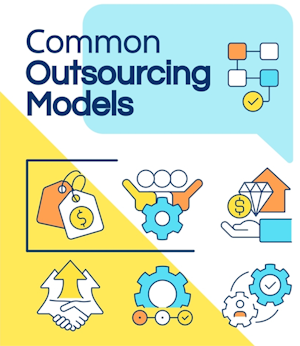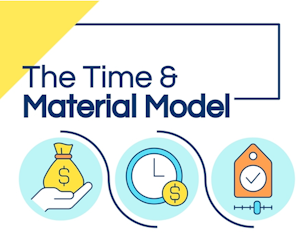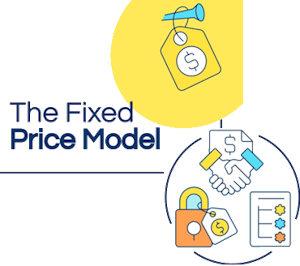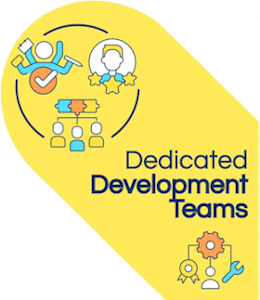At Yu Spin, your privacy is our priority. To ensure the best possible experience on our website, we use only necessary cookies. These cookies are essential for the basic functioning of our website, allowing you to navigate and use key features securely. We do not use any cookies that track your browsing activity or gather unnecessary personal information. Our commitment is to respect your privacy while providing you with a seamless and secure online experience. For more information on how we handle your data, please refer to our Privacy Policy. Thank you for trusting Yu Spin.
Framework

The selection of software development engagement models relies on several factors, including the duration of the software development process, the required number of software developers, and the project's scope. In addition to this, the cost to hire remote developers also depends on the engagement model selected, though the amount will be a tentative one based on the skills and experiences of the developers, it will help our clients have a better idea about the budget required.
While clients can freely select the most suitable model for their project, they can also seek assistance from us if needed.
We are always ready to help and do more than agreed.
Time and Material Model

The Time and Materials (T&M) Model is a software development engagement model where the client pays for the actual time and resources expended by the development team on the project. In this model, the client is billed based on the number of hours worked by the developers, project managers, designers, testers, and other resources involved, as well as any materials or third-party services used during the project.
Overall, the Time and Materials Model offers flexibility, transparency, and adaptability, making it suitable for projects with evolving requirements or uncertain scope. It allows clients to actively participate in the development process and provides the development team with the flexibility to deliver high-quality solutions that meet the client's changing needs.
Flexibility:
The Time and Materials Model offers flexibility to accommodate changes in project scope, requirements, and priorities. Clients have the freedom to adjust the project scope or introduce new features and functionalities as needed, with costs adjusted accordingly based on the additional time and resources required.
Transparency:
The billing in the Time and Materials Model is based on actual hours worked and expenses incurred, providing transparency into the project's progress and costs. Clients have visibility into the time spent by each team member, as well as detailed breakdowns of expenses such as software licenses, hardware, and other materials.
Adaptability:
This model is well-suited for projects with evolving requirements, where the full scope of work may not be known upfront. It allows for iterative development and incremental delivery, enabling clients to refine their requirements and priorities based on ongoing feedback and market conditions.
Ongoing Collaboration:
The Time and Materials Model fosters ongoing collaboration between the client and the development team. Clients have the opportunity to provide feedback and guidance throughout the project lifecycle, ensuring that the final product meets their expectations and requirements.
Cost Control:
While the Time and Materials Model provides flexibility, it also requires careful cost management to avoid budget overruns. Clients can control costs by setting budgets, defining project milestones, and monitoring progress closely to ensure that resources are allocated efficiently and effectively.
Risk Sharing:
In the Time and Materials Model, both the client and the development team share the risk associated with the project. Clients assume the risk of project scope changes and potential cost overruns, while the development team bears the risk of accurately estimating and managing project timelines and resource requirements.
Incremental Billing:
Billing in the Time and Materials Model is typically done on a regular basis, such as monthly or bi-weekly, based on the actual hours worked and expenses incurred during the billing period. This allows for incremental billing and helps clients manage cash flow more effectively.
Fixed Price Model

The Fixed Price Model is a software development engagement model where the project scope, timeline, and cost are agreed upon upfront between the client and the development team. In this model, the client pays a predetermined fixed price for the entire project, regardless of the actual time and resources expended by the development team.
Overall, the Fixed Price Model offers cost predictability and clarity for both clients and development teams, making it a popular choice for projects with well-defined requirements and deliverables.
Defined Scope:
The project scope is clearly defined in the initial agreement between the client and the development team. This includes the features, functionalities, deliverables, and any specific requirements of the project.
Predictable Costs:
With a fixed price agreed upon upfront, the client has clarity on the total cost of the project from the beginning. This can be advantageous for clients with strict budget constraints or those seeking cost predictability.
Set Timeline:
The project timeline is also established at the outset, outlining key milestones and deadlines for project deliverables. Adhering to the agreed timeline is essential to ensure the project stays within budget and meets the client's expectations.
Limited Flexibility:
While the Fixed Price Model offers cost predictability, it may lack flexibility when it comes to accommodating changes in project requirements or scope. Any modifications or additions to the project scope may result in additional costs and require renegotiation of the contract.
Reduced Client Involvement:
Once the project scope is defined and the contract is signed, clients may have less involvement in the day-to-day management of the project. This can be beneficial for clients with limited time or resources to dedicate to project oversight.
Risk Allocation:
In the Fixed Price Model, the development team assumes the risk of completing the project within the agreed budget and timeline. Any cost overruns or delays are the responsibility of the development team, incentivizing them to manage resources efficiently and deliver the project on time and within budget. Despite its advantages, the Fixed Price Model may not be suitable for all projects, especially those with evolving requirements or uncertain scope. Clients must ensure that the project scope is thoroughly defined and documented to minimize the risk of misunderstandings or disputes during the development process. This allows for incremental billing and helps clients manage cash flow more effectively.
Dedicated Team

The Dedicated Team Model is a software development engagement model where the client hires a dedicated team of developers, designers, testers, and other professionals who work exclusively on their project. In this model, the client pays a monthly fee for the services of the dedicated team, and the team operates as an extension of the client's internal team.
Overall, the Dedicated Team Model is well-suited for complex projects with evolving requirements, long-term engagements, or where close collaboration and full-time support are essential. It offers clients the flexibility, scalability, and expertise required to successfully execute their software development initiatives.
Exclusivity:
The dedicated team works exclusively on the client's project, focusing all their efforts and resources on achieving the project goals. This ensures that the team members have a deep understanding of the project requirements and can deliver high-quality results.
Scalability:
The dedicated team can be scaled up or down based on the project requirements. The client has the flexibility to adjust the team size and composition as needed to accommodate changes in project scope, timeline, or workload.
Full-time Engagement:
TMembers of the dedicated team typically work full-time on the client's project, providing ongoing support and continuity throughout the project lifecycle. This allows for close collaboration, effective communication, and seamless integration with the client's internal processes.
Transparency:
The Dedicated Team Model promotes transparency and visibility, with regular communication and reporting between the client and the dedicated team. Clients have full visibility into the team's activities, progress, and performance metrics, allowing for effective project management and decision-making.
Control and Flexibility:
The client retains control over the project direction, priorities, and decision-making process while leveraging the expertise and resources of the dedicated team. This model offers greater flexibility to adapt to changing project requirements, allocate resources efficiently, and optimize project outcomes.
Cost Efficiency:
While the Dedicated Team Model may involve a higher initial investment compared to other engagement models, it can be more cost-effective in the long run for large-scale or long-term projects. Clients benefit from having a dedicated team of skilled professionals without the overhead costs associated with hiring and managing an in-house team.
Collaborative Partnership:
The Dedicated Team Model fosters a collaborative partnership between the client and the development team, built on trust, communication, and shared objectives. The development team becomes an integral part of the client's extended team, working towards common goals and delivering value-added solutions.
